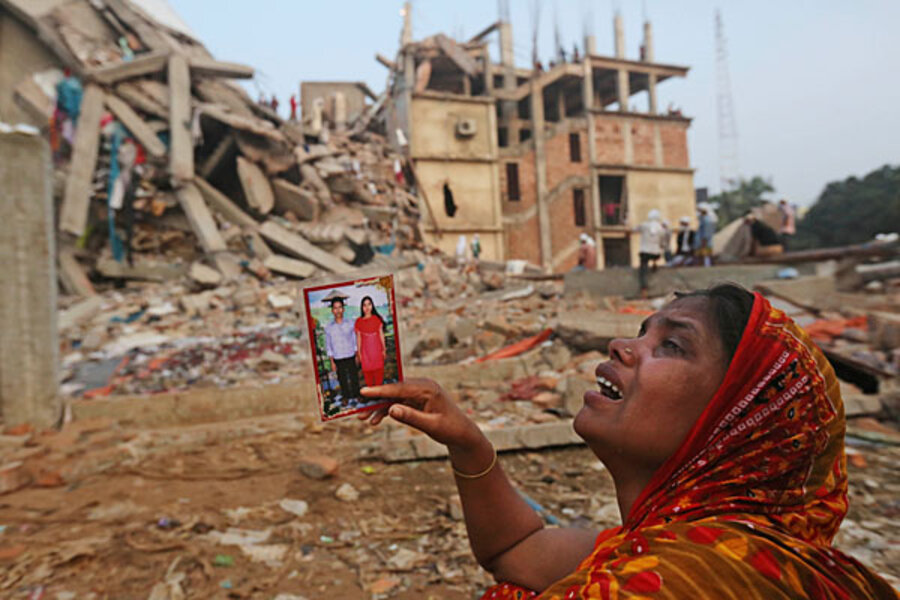After Dhaka garment factory collapse, chances for supply chain changes low
Loading...
As Bangladeshi rescue workers continue to pull survivors and bodies from the ruins of a Dhaka, Bangladesh factory where some 300 were killed in a building collapse Wednesday, thousands of protesters took to the streets across the city to express their outrage at negligence that has racked the world's second-largest garment-exporting country for years.
Blocking traffic and vandalizing garment factories that stayed open during today’s official day of mourning, protestors smashed cars and clashed violently with police, demanding accountability for what The New York Times is calling “one of the worst manufacturing disasters in history.”
Among those at the receiving end of the rage are not only unscrupulous local factory owners and lax regulators, but also the Western corporations whose demands for cheaply-made garments have fueled the precarious working conditions in Bangladesh’s 5,000 clothing factories.
Plucked from the rubble of the eight-story factory were labels from several Western brands, including some sold in major chains such as Wal-Mart, JC Penney, and Spanish retailer El Corte Ingles, who immediately began to issue a flurry of sympathetic press releases. British retailer Primark said it was “shocked and deeply saddened by this appalling incident” and the Canadian retailer Loblaw said it was “extremely saddened” by the tragedy, the Times reports.
None, however, went so far as to implicate themselves in the disaster.
“These companies have come up with some very effective approaches to distance themselves from responsibility in tragedies like this,” says Heather White, founder of Verite, an independent auditing group. Indeed, she says, Western companies often bring their garments from factory to store through a tangled and globally sprawled cluster of middlemen – subcontractors, auditors, consultants – who not only drive down their prices but also help ensure that responsibility for corporate stumbles are spread thinly.
That leaves many Western consumers, even the most conscientious, flummoxed by how to react to tragedies like the factory collapse, Ms. White says. Short of switching to niche-marketed fair trade brands—think American Apparel or TOMS Shoes – there’s “no real way for your average consumer to use their buying power to mobilize around these issues,” she says.
But it wasn’t always that way.
In the late 1990s, a widespread campaign against labor conditions in Nike factories helped shame the company into adopting a code of conduct in its factories for the first time. Responding to massive protests, sit-ins, and hunger strikes, a large number of universities forced the suppliers of their branded athletic apparel to institute labor code reforms in return for their business.
“It was amazing to see how people bought in [to the campaign],” remembers Kirsten Moller, organizing director for the human rights group Global Exchange, which helped lead the Nike campaign. “They really had no idea what was happening, no idea under what conditions these products they loved were being made.”
So what changed?
As the issue slid from the front page, "people got tired of protesting,” Ms. Moller says.
Many of the activists from the 1990s – immortalized by their chaotic protests at the 1999 summit of the World Trade Organization – moved on to new causes, White says, with many becoming deeply involved in anti-war efforts in the early 2000s.
And perhaps more importantly, the corporations simply caught up. “They co-opted the language of human rights and social responsibility,” she says, “because they realized their consumers now cared about that.”
As a result of the Nike movement, she says, most corporations now at least pay lip service to the idea that transnational companies have a responsibility to the people who work for them and the land they work on.
“But we’re nowhere near where we should be,” she says.
In the streets of Dhaka today, it seems there are many who would agree with that.








